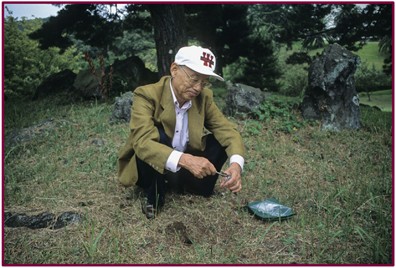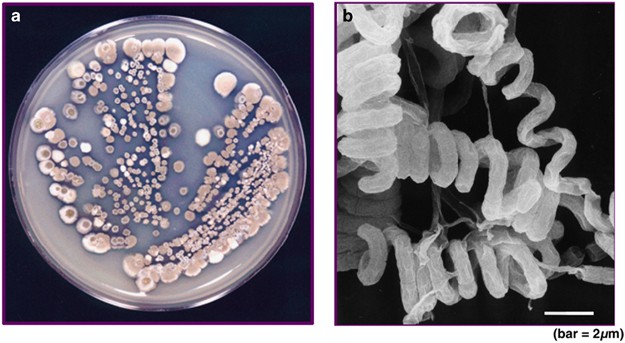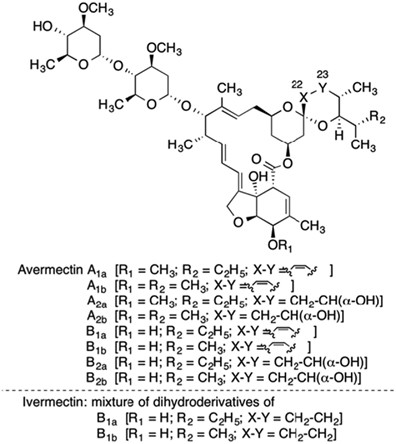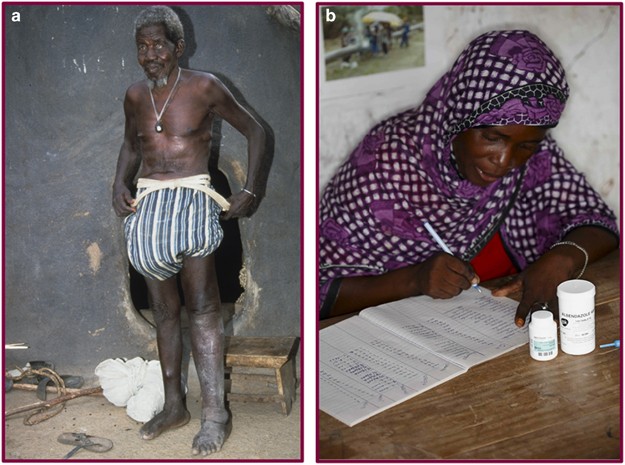Don’t know how many of you caught this over the weekend just gone but here’s an excellent thread laying it all out.
Thanks spike!
ThreadReader doesn’t show the pictures for me, worth reading on twitter itself to see all the MAINSTREAM outlets that ran with it, including the BBC and the Guardian who you might have thought would check it out (then again, you might not…)
Some on the thread, which was contemporary (Kudos to Holden on getting the rebuttal in early), were saying it hadn’t been proved false yet, but it has now.
Link: https://www.washingtonexaminer.com/opinion/five-red-flags-in-that-oklahoma-ivermectin-story-should-have-set-off-everyones-bs-alarm
Link: https://www.washingtonpost.com/opinions/2021/09/09/bogus-oklahoma-ivermectin-story-was-just-too-good-check/
The BBC just made up the padding for the story from old…padding:
"Its use has become so common in the US that the Food and Drug Administration (FDA) released a statement last month urging people not to take it.
“You are not a horse. You are not a cow,” the FDA said, warning that taking large doses of the substance “is dangerous and can cause serious harm”."
Link: Ivermectin: Oklahoma doctor warns against using drug for Covid treatment - BBC News
The theme used above by the FDA and the BBC, of pretending/lying that Ivermectin is only used for animals, is being used to great propaganda effect, both to make people think it’s a load of nonsense and to smear the protagonists, some of whom are top specialists (and definitely know the difference between a person and a horse).
Joe Rogan knows all about it, as he’s suing CNN about that very distinction, which was used deceiptfully to smear him.
Link: Joe Rogan slams CNN over controversial drug Ivermectin | TheHill
A recent btl comment by Lou0008 on the WaPo article says
“It was also too good a story to deny later, when it turned out to be false. Those who jumped on the bandwagon have, for the most part, not corrected their original coverage.”
The anti-IVM propaganda blitz rages on though:
Ivermectin has ‘no role’ to play in fight against Covid-19, health officials say
Er, it has no role to play in Oz, cos it’s been banned
Dr Cowie assures us there is “no evidence behind its use”
The man who made this wholly false statement is Victoria’s deputy chief health officer - “the man behind Victoria’s COVID-19 vaccine rollout”. A slight conflict of interest - IVM success getting going viral would crash the vaccine program.
IVM has been squashed before in Oz, as the above link notes:
"Australia’s medicines regulator was also forced to step in earlier in the year, cautioning a group of doctors who were also advocating for the use of Ivermectin against Covid-19.
The Covid Medical Network (CMN) had promoted medications such as Ivermectin, Hydroxychloroquine, Azithromycin and Doxycycline in the fight against Covid-19.
But the group noted on its website it had received a formal “cease and desist” letter from Australia’s Therapeutic Goods Administration to take down the “Early Treatments” section from its website."
Yes absolutely of interest Evvy… you have little idea of just how bad things are here, which is why I’ve not had time to post anything here, in part. The morning current affairs program on the ABC, AM, just had two reports. The first was about the problem of hesitancy in Aboriginal communities, currently being targeted with teams of nurses, police and soldiers to help get them all shot with Pfizer, including the “vulnerable” young kids, and a whole tirade against the promotion of the proven useless IVM by a couple of high profile pollies, Clive Palmer and Craig Kelly. Perhaps the indigenes are more immune to the official B/S because they don’t have tellies! They also believe in natural cures and spirits…
But following this was a report about “new therapeutics” to help in the treatment with the vaccines not able to cover everyone (the children are not yet “protected”,so it’s important that everyone else is fully spiked.) The new drugs were dexamethazone, Remdesevir and monoclonal antibodies - which have just been obtained for us.
But there is one outstanding question. My doctor told me that I could get Ivermectin IF I tested positive to CV19 - but not before - though I pointed out it was important to take it early. I’m sure the CMN was helped to get this authorisation by Sydney lawyer Tony Nikolics, only about a month ago. Yet the ABC told us today that it was NOT authorised by the advisory group to government, ATAGI.
No-one talks about Josh Rogan, at least not on the state controlled ABC and SBS, nor in the print media. There is no visible resistance, but constant pleading to help children get spiked, coming also from frightened parents.
I’m rapidly losing it, though not the battle… cheers D
Fantastic piece of work, one single lie amplified n times, and the narrative is set: Hicks, Trumpers, and Deniers all at the mercy of these corrupt Medicine Men.
Let’s hope no-one tells the Terror Deranged that the leading treatment for blood clotting is a Rat Poison.
Oh I dunno. There’d by a certain sardonic comedy in people who’ve been conned into taking the poison-stabs, belatedly realising their error, then trying to undo the desperate effects by taking rat poison.
No, no! Shouldn’t indulge in cruel schadenfreude like this. Pity the hypnotically over-suggestible. It’s not their fault that they happen to have that vulnerability. Especially under the influence of the faked terror-porn hurricane. According to Mike Adams, the Health Ranger, star anise is an actually-genuine helper against the damages of the poison-stabs. And a harmless herbal to boot. Look into it if you’ve been conned into taking the stabs.
Hi @Kieran_Telo, if they tested warfarin the way they tested HCQ with 10 times the recommended dose the bodies would be pouring into the streets - literally!
cheers
Just listened to first part of episode 232 of the Highwire :
great show reinforcing the exposure of MiSinforMation imo.
cheers
omg that is an image to conjure with
Yes, and where the BBC and Guardian lead, TLN follows these days … see
https://members5.boardhost.com/xxxxx/thread/1630980449.html
A certain Ken W: “Why do you think treatment with a drug used for worming horses is superior or indeed safer that a vaccine specifically designed for this virus?”
Oh dear - you’re well out of that level of analysis!
Indeed! Well out of such - wilfully - blind foolishness, E! The Hulk has gone to the dogs. Well done, ‘sole-moderator-for-life’ dan!
I happen to know from long reading of his input that Ken is no fool. Yet you see the lengths of blind silliness that the hypnosis blizzard can lure people into, if they first allow themselves to be stampeded by fear-porn into hypnotically-induced delusion, as Ken and plenty of the other frothers on the Hulk have done.
A real gob-smacker to me, that astonishing descent into willingly-accepted manipulation! It has caused me a great deal of astonished grief. At my age, and with my degree of cold-blooded scepticism, and indeed cynicism about the worst depths of human foolishness, I really should know better. But looking - aghast! - at some of my closest people who’ve fallen for it, I’m still badly shocked.
I would add to that high quality insight, another poster’s quoting of Merck as justification for rubbishing Ivermectin.
That’s right, J. I saw a vid recently - linked by a btl commenter on Off-G, I seem to remember - of an old veteran researcher giving a lecture in - Trinity, Dublin, was it? - who told a story of the Merck CEO actually making ivermectin available free to poor Africans, so that they can be saved from the - entirely curable - horror of River Blindness. Realworld stuff is often bewilderingly complex. Rarely just all unalloyed good, or unalloyed bad. 
Here’s a good piece on Ivermectin, from 2017 so uncontroversial.
The ease with which the drug has been discredited as ‘horse paste’ despite the easily available evidence to the contrary is a testament to the effectiveness of the propaganda system and the group think it encourages. The sane response, that the jury is out on Ivermectin’s efficacy as a profilactic for Covid, pending proper trials, is buried underneath the tribalistic response engendered by the framing around the drug, i.e. Trumpers, hicks (anti vaxxers, flat earthers, Q Anon) etc stuffing ‘horse paste’ in every oriface and then needing ICU treatment. This is the world we’re living in folks (I know you know).
Bugger.
…
Ivermectin: enigmatic multifaceted ‘wonder’ drug continues to surprise and exceed expectations
Abstract
Over the past decade, the global scientific community have begun to recognize the unmatched value of an extraordinary drug, ivermectin, that originates from a single microbe unearthed from soil in Japan. Work on ivermectin has seen its discoverer, Satoshi Ōmura, of Tokyo’s prestigious Kitasato Institute, receive the 2014 Gairdner Global Health Award and the 2015 Nobel Prize in Physiology or Medicine, which he shared with a collaborating partner in the discovery and development of the drug, William Campbell of Merck & Co. Incorporated. Today, ivermectin is continuing to surprise and excite scientists, offering more and more promise to help improve global public health by treating a diverse range of diseases, with its unexpected potential as an antibacterial, antiviral and anti-cancer agent being particularly extraordinary.
Introduction
The unique and extraordinary microorganism that produces the avermectins (from which ivermectin is derived) was discovered by Ōmura in 1973 (Figure 1). It was sent to Merck laboratories to be run through a specialized screen for anthelmintics in 1974 and the avermectins were found and named in 1975. The safer and more effective derivative, ivermectin, was subsequently commercialized, entering the veterinary, agricultural and aquaculture markets in 1981. The drug’s potential in human health was confirmed a few years later and it was registered in 1987 and immediately provided free of charge (branded as Mectizan)—‘as much as needed for as long as needed’—with the goal of helping to control Onchocerciasis (also known as River Blindness) among poverty-stricken populations throughout the tropics. Uses of donated ivermectin to tackle other so-called ‘neglected tropical diseases’ soon followed, while commercially available products were introduced for the treatment of other human diseases.
Figure 1
Satoshi Ōmura collecting soil from the very site where the fateful sample containing Streptomyces avermectinius (S. avermitilis) was taken in 1973. (Photo credit: Andy Crump).
Many excellent, eloquent and comprehensive reviews covering the discovery, advent, development, manufacture and distribution of ivermectin have been published by those intimately involved with the various stages.1, 2, 3, 4, 5, 6, 7, 8, 9, 10, 11, 12, 13, 14 It would be folly to replicate those here. Instead, it is the current status, beneficial global health impact and exciting future potential that ivermectin has to offer to human health worldwide that will be the focus of attention.
Today, ivermectin remains a relatively unknown drug, although few, if any, other drugs can rival ivermectin for its beneficial impact on human health and welfare. Ivermectin is a broad-spectrum anti-parasitic agent, primarily deployed to combat parasitic worms in veterinary and human medicine. This unprecedented compound has mainly been used in humans as an oral medication for treating filarial diseases but is also effective against other worm-related infections and diseases, plus several parasite-induced epidermal parasitic skin diseases, as well as insect infestations. It is approved for human use in several countries, ostensibly to treat Onchocerciasis, lymphatic filariasis (also known as Elephantiasis), strongyloidiasis and/or scabies and, very recently, to combat head lice. However, health workers are increasingly utilizing it in an unsanctioned manner to treat a diverse range of other diseases, as shown in Appendix 1.
The past: unmatched successes
Perhaps more than any other drug, ivermectin is a drug for the world’s poor. For most of this century, some 250 million people have been taking it annually to combat two of the world’s most devastating, disfiguring, debilitating and stigma-inducing diseases, Onchocerciasis and Lymphatic filariasis. Most of the recipients live in remote, rural, desperately under-resourced communities in developing countries and have virtually no access to even the most rudimentary of medical interventions. Moreover, all the treatments have been made available free of charge thanks to the unprecedented drug donation program.
When the avermectins were discovered, they represented a completely new class of compounds, ‘endectocides’, so designated because they killed a diverse range of disease-causing organisms—as well as pathogen vectors—inside as well as outside the body. The first publications on avermectin appeared in 1979, describing it as a complex mixture of 16-membered macrocyclic lactones produced by fermentation of the actinomycete Streptomyces avermitilis—later re-classified as S. avermectinius (Figure 2). The avermectin family displayed extraordinarily potent anthelmintic properties.15, 16, 17 Ivermectin is a safer, more potent semisynthetic mixture of two chemically modified avermectins, comprising 80% of 22,23-dihydroavermectin-B1a and 20% 22,23-dihydroavermectin-B1b (Figure 3).
Figure 2
S. avermitilis, sole source of the avermectins: (a) colony and (b) photomicrograph. (Photo credits: Kitasato Institute).
Figure 3
The molecular structure of avermectin, a complex of several compounds, which then underwent chemical modification to produce ivermectin, a combination of two dihydroderivatives.
Ivermectin was a revelation. It had a broad spectrum of activity, was highly efficacious, acting robustly at low doses against a wide variety of nematode, insect and acarine parasites. It proved to be extremely effective against most common intestinal worms (except tapeworms), could be administered orally, topically or parentally and showed no signs of cross-resistance with other commonly used anti-parasitic compounds. Marketed in 1981, it quickly became used worldwide to combat filarial and other infections and infestations in livestock and pets.
Registered for human use in 1987, ivermectin was immediately donated as Mectizan tablets to be used solely to control Onchocerciasis, a skin disfiguring and blinding disease caused by infection with the filarial worm Onchocerca volvulus, which afflicted millions of poor families throughout the tropics. Some 20–40 million people were infected prior to the launch of large-scale control interventions, with around 200 million more at risk of infection.18, 19, 20 Human infection has been tackled in endemic areas through annual or semi-annual mass drug administration of ivermectin and only 21–22 million people (almost exclusively in Africa) remain infected with O. volvulus.21
Since the prodigious drug donation operation began, 1.5 billion treatments have been approved. Latest figures show that an estimated 186.6 million people worldwide are still in need of treatment, with over 112.7 million people being treated yearly, predominantly in Africa.22 Actual treatments declined in 2014/2015 due to the planned closure of the highly successful and innovative African Programme for Onchocerciasis Control and a subsequent delay before the more comprehensive replacement, the Expanded Special Project for the Elimination of Neglected Tropical Diseases in Africa, became established and operational, plus deferment of some treatments until 2016.
The African Programme for Onchocerciasis Control was created in 1995 to establish community-directed treatment with ivermectin to control Onchocerciasis as a public health problem in African nations that represented 80% of the global disease burden. For long the sole agent used in control efforts, ivermectin has been so successful that the goal has now switched from disease control to worldwide disease elimination. For most afflicted countries, nationwide Onchocerciasis elimination is within reach and there is hope that the global elimination target of 2025 will be achieved.23 Latest models indicate that if the 2025 target (or sooner) is to be achieved, 1.15 billion more treatments will be required,24 assuming that the absence of drug resistance continues.
In the mid-1990s, ivermectin was found to be an excellent treatment for Lymphatic filariasis, leading to the donation program being extended to cover this disease in areas where it co-exists with Onchocerciasis (Figure 4). In 2015, almost 374 million people required ivermectin for Lymphatic filariasis, with 176.5 million being treated.25 In 2015, 120.7 million ivermectin treatments were approved for Lymphatic filariasis, an accumulated 1.2 billion treatments being authorized since the drug donation program was extended to cover the second disease in 1998.26
Figure 4
(a) An African man with blindness, skin damage and disfigurement due to Onchocerciasis and Lymphatic filariasis. (b) A community-directed distributor of ivermectin recording the administration of a combination of ivermectin with albendazole, used to treat and protect individuals in areas where the two diseases co-exist—both diseases being poised for elimination as public health problems within a decade. (Photo credits: Andy Crump).
During 2016, well over 900 million donated ivermectin tablets should be dispatched, representing more than 325 million treatments.22
Ivermectin mass drug administration also bestows significant secondary community-wide health and socioeconomic benefits due to its impact on non-target infections.13 During 1995–2010, it was estimated that the disability-adjusted life years averted via the impact on these non-target diseases added a further 500 000 disability-adjusted life years to the African Programme for Onchocerciasis Control’s 19.1 million saved due to Onchocerciasis interventions.27
Surprisingly, despite 40 years of unmatched global success, plus widespread intensive scientific study in both the public and private sectors, scientists are still not certain exactly how ivermectin works. Moreover, whereas ivermectin-resistant parasites swiftly appeared in treated animals,28 as well as in ectoparasites, such as copepods parasitizing salmon in fish farms,29 somewhat bizarrely and almost uniquely, no confirmed drug resistance appears to have arisen in parasites in human populations, even in those that have been taking ivermectin as a monotherapy for over 30 years.
cont at link…
Haven’t had a chance to read this yet and won’t now as already ridiculously late in Western Australia (1:20 am) but definitely one to bookmark and read as soon as possible. Thank you very much for sharing.



